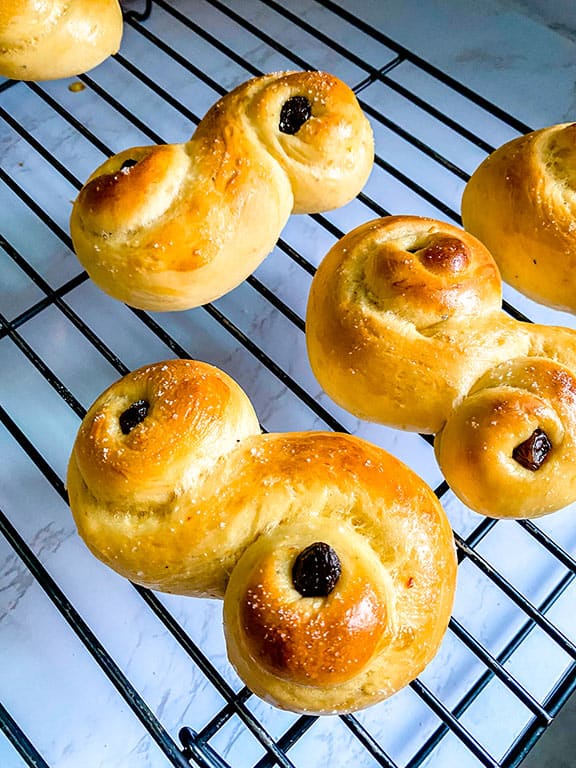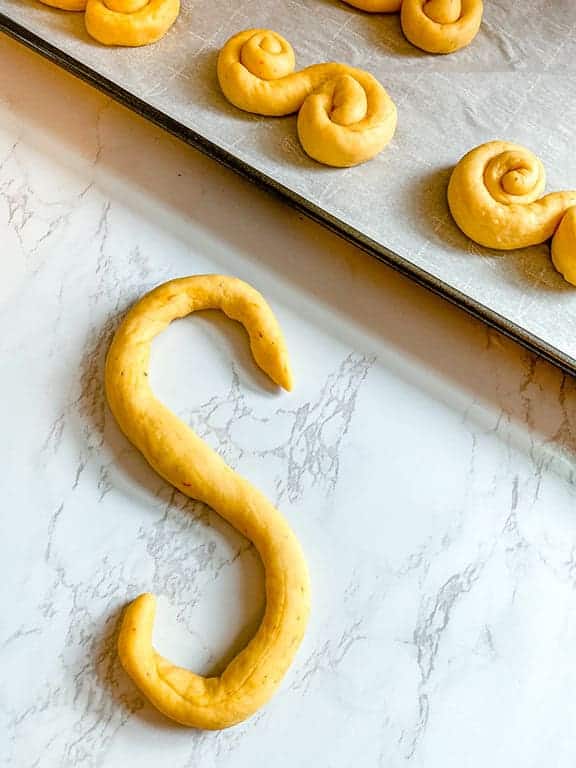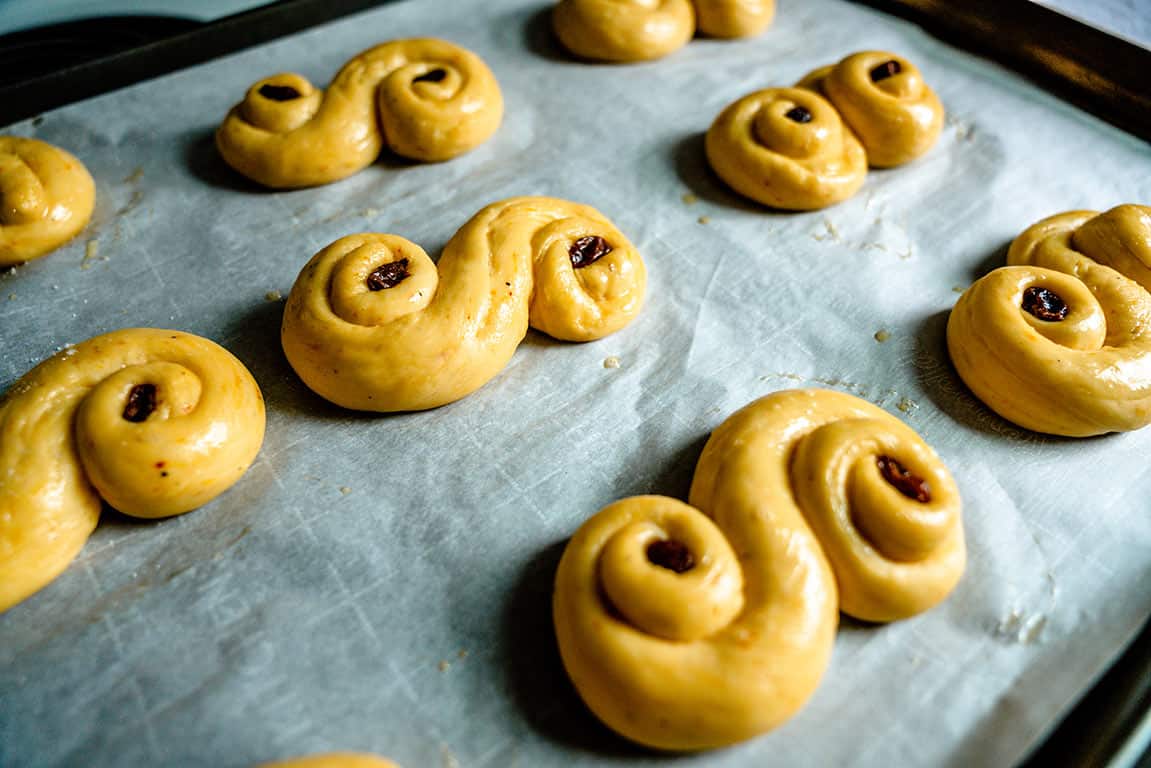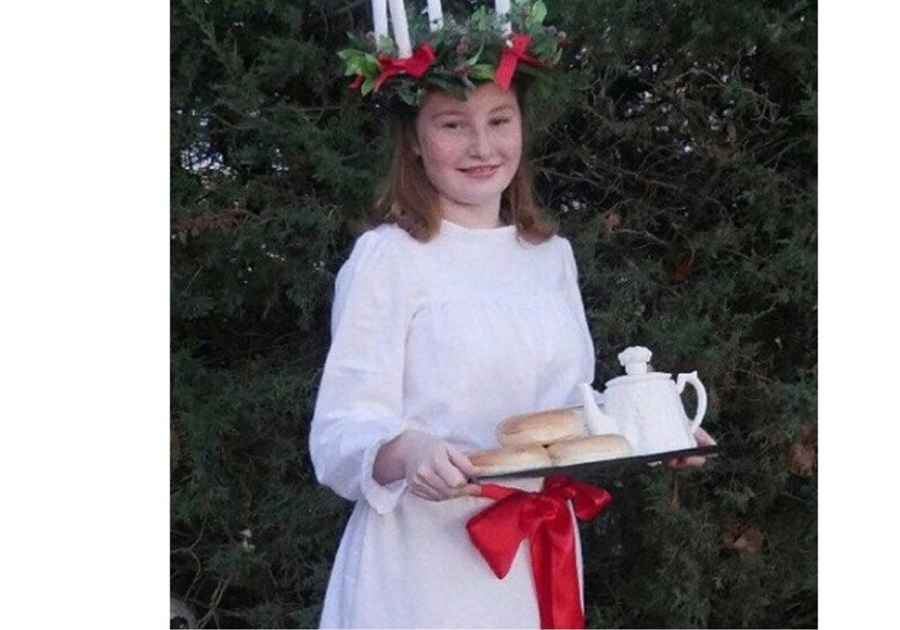Every family has its own set of unique Christmas traditions. While I love the ones that my family celebrates, I have always been intrigued by how other cultures and countries celebrate different holidays. Each country and many communities have their own ways celebrate this time of year through festivals, recipes and décor.
One of my families favorite traditions we have adopted is from Iceland. The custom of giving books at Christmas in Iceland is called 'Jolabokaflod' or 'Jólabókaflóð' which translates as 'Christmas flood of books'! It started during WWII when books weren't rationed and many other things were, so books made really good gifts. On Christmas Eve many people in Iceland will open a new book as a gift, and read it with a cup of hot chocolate. Books and chocolate... what's not to love!
But there are many other Scandinavian Christmas traditions that are also interesting. My family learned about St Lucia Day when my daughter, Amanda, received a Kristen American Girl Doll one year for Christmas. Kristen was Scandinavian and came with a St Lucia Day costume.

December 13th marks Lucia Day or the feast of Saint Lucy, a festival of lights that kicks off the Christmas season in most Scandinavian countries. The festival commemorates Saint Lucia, a young girl that was martyred in 304 AD by Romans for delivering food to Christians hiding from persecution. As Christianity spread over the centuries, monks brought the tale of Lucia to Sweden, solidifying her in the culture. She is now the patron saint of the city of Syracuse (Sicily) and of virgins.
Today, one girl is elected “St. Lucia” to lead the procession of young girls dressed in white with red sashes through town to the church. They wear a crown of lit candles and lingonberry branches on their heads. Boys dress all in white as well, and everyone sings traditional songs to mark the day.
Families celebrate at home, with the oldest daughter designated as St. Lucia, serving coffee, ginger biscuits and saffron bread (lussekatter) to family and friends who visit during the day. Lussekatter, means “Lucia cats.” The buns have gone through a few different names, but eventually morphed into lussekatter thanks to the swirl in the dough that looks like a cat’s tail. This saffron S-shaped sweet bun is a delicious Scandinavian Christmas tradition that can easily be made at home. These fragrant buns are baked with saffron and dried fruit (like raisins and currants). They are similar to a tea cake and are best enjoyed along with a cup of coffee and good company.
As you will see, if you make this saffron bun recipe, each lussekatter is a little burst of sunshine, bringing light to your cold winter day. The saffron brings a warm yellowish-orange color to the dough. If you add cardamom, you infuse a bit of warm winter spice to each bite.
Throughout December, many bakeries make these buns in place of cinnamon buns to be enjoyed with your Swedish Fika, or afternoon coffee and cake break.

LUCIA SAFFRON BUNS INGREDIENTS
- 1/2 tsp saffron threads
- 1/2 tbsp vodka
- 32 raisins
- 1 1/4 cups of milk
- 1 egg, beaten
- 4 cups of bread flour (plus extra)
- 1/2 tsp salt
- 1/2 cups superfine sugar
- 1 tsp cardamom
- 1 packet of fast-acting dry yeast (1 1/2 tsp yeast)
- 6 tbsp unsalted butter (room temperature, cut into cubes)
- Egg wash: 1 egg with 1 tbsp whisked together
SPECIAL BAKING EQUIPMENT
- Baking scale
- Pastry Brush
- Standing Mixer
SAFFRON BUNS INSTRUCTIONS
- Grind the saffron with a mortar and pestle
- Combine vodka and saffron in a small bowl. Allow to sit for 30 minutes.
- In a medium bowl, pour boiling water over raisins and let sit.
- In a pot, heat the milk and sugar to 105 degrees F.
- Using a Stand Mixer, sift the flour and salt into the mixer bowl.
- Sprinkle yeast into bowl, and give it a quick stir.
- Using the dough hook, set your speed to SLOW.
- Slowly add in the milk, saffron, cardamom and beaten egg.
- Increase your speed to medium low (KitchenAid 3). Slowly add in the butter one cube at a time.
- If the mix looks too wet, add one tablespoon of flour at a time, but dough should stay a little sticky.
- Knead the dough on medium for another 3 minutes.
- Move the dough to a clean, dry large bowl. Cover with plastic wrap and allow about one hour for the dough to proof (rise) in a warm dry place ( you can set your oven to 95-100 degrees F. Turn it off and set the bowl in the oven to proof).
- Once dough is about double, punch down the dough, knead the dough a few times and then divide dough into about 16 pieces (70 grams each).

- Roll each ball into a long thin stick, about 12 inches long. Set aside all rolls, and then roll each roll again until it’s a bit longer and thin (about 14 inches). Start rolling it into an “S” shape, curling each end into a tight swirl.
- Place on a parchment paper lined baking sheet, cover with a clean, dry towel (or plastic wrap).
- Allow the dough to rise (proof) a second time, for at least 30 minutes until saffron buns double in size.
- Heat oven to 425 degrees F.
- Brush tops of your saffron buns with egg wash.

- Place a raisin in the center of each swirl (2 raisins per bun).
- Bake for 8 minutes or until golden brown.
- Place cooked buns on a wire rack to cool for a few minutes.
- Serve warm with melted butter.
A little something extra: you can dust the tops of your saffron buns with a little castor sugar before baking for an extra bit sweet.
FREEZING: You can freeze the buns and reheat in the microwave.
WARM BUNS: Buns will keep for 2-3 days in a container. Pop them in the microwave for 20-30 seconds to warm them up if needed.
Another seasonal favorite, Swedish glögg is a fragrant mulled wine made with red wine, brandy, whiskey or aquavit and flavored with spices like cinnamon, cloves, and cardamom. Traditional glögg is also mulled with an assortment of fruit (like diced prunes and dates) and almonds. A glass of glögg will warm you from head to toe and is a perfect beverage to enjoy after being out in the cold. Be sure to serve your glögg in a mug accompanied by a small spoon in order to scoop out your soaked fruit and nuts.
Glögg
Ingredients: MAKES ABOUT 1½ QUARTS
2 cinnamon sticks, broken into pieces
1 tsp. cardamom pods
1 small piece ginger, peeled
Zest of ½ orange
6 whole cloves
½ cup vodka
1 750-ml bottle dry red wine
1 cup ruby port or Madeira
1 cup granulated sugar
1 Tbsp. vanilla sugar
½ blanched whole almonds
½ cup dark raisins
Preparation
- Crush cinnamon and cardamom in a mortar and pestle (or put them on a cutting board and crush with the bottom of a heavy pot.) Transfer to a small glass jar and add ginger, orange zest, cloves, and vodka. Let sit 1 day.
- Strain vodka through a fine-mesh sieve into a large saucepan; discard spices. Add wine, port, granulated sugar, vanilla sugar, almonds, and raisins and heat over medium just until bubbles start to form around the edges.
- Ladle glögg into mugs, with a few almonds and raisins in each one. Keep any remaining glögg warm over very low heat until ready to serve (do not let it boil).



To stay in the KNOW - Sign up for our FREE weekly newsletter HERE!
Receive information about family-friendly events in/around Duluth, Norcross, Suwanee, Johns Creek, Peachtree Corners & beyond.
Have an event you'd like submitted to our calendar for consideration? Submit an event HERE.
Want to tell over 10,000 families in this area about your business?
Email beckys@macaronikid.com for advertising information.
Tell a friend about DNJC MK! More subscribers help us get more fun Giveaways from our sponsors for your family!
Don't forget to be social with us on Facebook, Twitter & Instagram.



